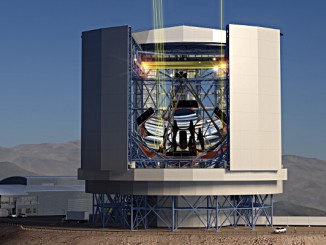
Astronomers have found two additional planets orbiting a star 31 light years away where the Transiting Exoplanet Survey Satellite – TESS – earlier found an exoplanet 22 percent larger than Earth but orbiting 11 times closer to the star than Mercury orbits the Sun.
TESS discovered the previously known world, a “hot Earth” catalogued as GJ 357b, by measuring the slight dimming of the parent star when the exoplanet crossed in front as viewed from the spacecraft. The observations indicated GJ 357b completes one orbit every 3.9 days and has an equilibrium temperature or nearly 500 degrees.
To confirm the TESS observations, astronomers used Earth-based instruments to take a closer look. By measuring a subtle back-and-forth movement of the star, they were able to discern the gravitational influences of two additional planets. A key instrument in the discovery was the Planet Finder Spectrograph used with one of the Magellan telescopes at Carnegie’s Las Campanas Observatory in Chile.
“Because it is a nearby M dwarf, which we know often host small planets, the PFS team started monitoring this star in 2016,” said Carnegie astronomer Johanna Teske. “As soon as we saw that TESS had indeed detected a small transiting planet, we accelerated our PFS observing campaign.”
One of the two newly discovered planets, GJ 357c, is at least 3.4 times more massive than Earth and orbits the star every 9.1 days, giving it an equilibrium temperature of around 127 Celsius (260 Fahrenheit).
The third planet, GJ 357d, is 6.1 times more massive than Earth, completes one orbit every 55.7 days and has an equilibrium temperature around -53 Celsius (-64 Fahrenheit). Additional study is needed to determine if an atmosphere might be present but if so, enough heat could be trapped to permit liquid water to exist in a theoretically habitable environment.
TESS’s mission is to identify terrestrial worlds orbiting stars relatively close to the sun. Follow-up studies by more powerful instruments, like the upcoming James Webb Space Telescope and next-generation “extremely large” telescopes, are needed to determine an exoplanet’s habitability.
In the meantime, TESS, in concert with current ground-based instruments, is identifying a growing list of targets for future research. Like the new worlds discovered orbiting GJ 357.
“This planetary system helps demonstrate how crucial tools such as the PFS are for TESS’ success,” said Carnegie’s Sharon Wang.



